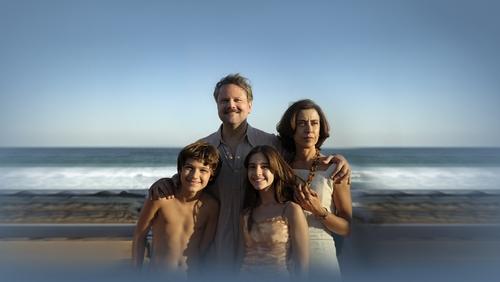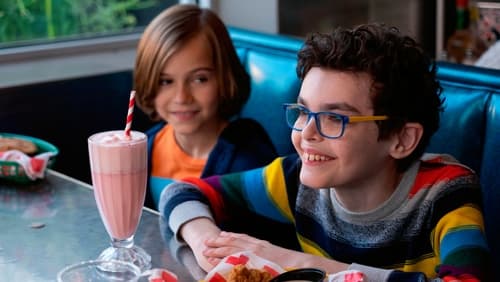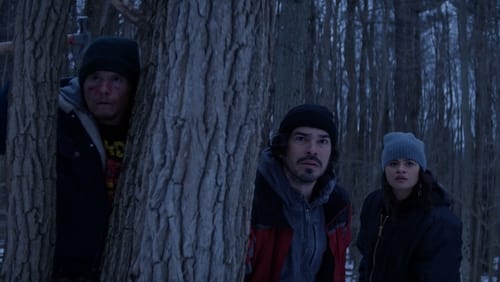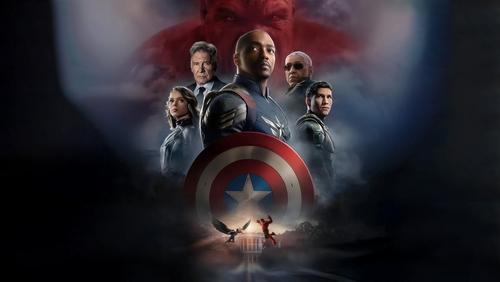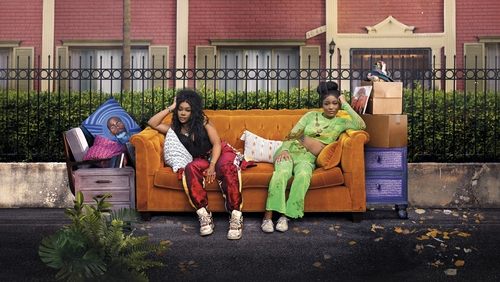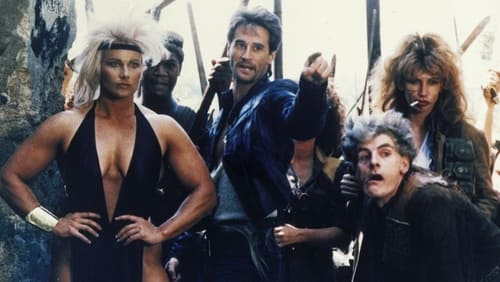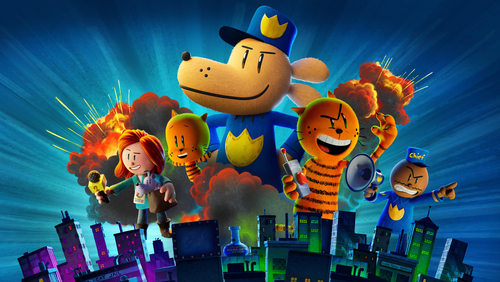Inside Out 2 (2024)
59KInside Out 2 (2024). 1h 36m | PG
“u0026quot;Inside Out 2u0026quot; is the sequel to Pixaru0026#39;s 2015 film u0026quot;Inside Outu0026quot;. Directed and co-written by Kelsey Mann and featuring the voices of Amy Poehler, Phyllis Smith, Lewis Black, Tony Hale, Liza Lapira, and Maya Hawke, it is a worthy follow-up that might just be the best Pixar sequel that is not related to the u0026quot;Toy Storyu0026quot; series.u003cbr/u003eu003cbr/u003eOne year after the events of the first film, Riley Andersen (voiced by Kensington Tallman) has just turned 13 and is ready to start high school. Once again guiding Riley on her journey are her emotions Joy (voiced by Amy Poehler), Sadness (voiced by Phyllis Smith), Anger (voiced by Lewis Black), Fear (voiced by Tony Hale), and Disgust (voiced by Liza Lapira). When Riley ventures off to ice hockey camp with her best friends, her five emotions try to work together to ensure she is able to make a good first impression by removing her negative memories and sending them to the back of her mind. To her shock, Riley soon learns that her friends will be attending different high schools and her emotions are unable to help her react to this in the usual clear manner. Complicating matters further, Riley also gains four new emotions in the process – Anxiety (voiced by Maya Hawke), Envy (voiced by Ayo Edebiri), Embarrassment (voiced by Paul Walter Hauser), and Ennui (voiced by Adele Exarchopoulos).u003cbr/u003eu003cbr/u003eBack in 2015, Pixar released what myself and many others consider to be one of their very best films – u0026quot;Inside Outu0026quot;. This landmark movie, which focuses on the personified emotions of a young girl named Riley, successfully appealed to viewers from all walks of life thanks to the clever way it tackles deep and important themes that virtually anyone can relate to regardless of their age. As a result, the film has deservedly cemented itself among not only Pixaru0026#39;s crowning achievements but also as quite possibly one of the greatest animated films of all time. Unlike many other Pixar films, Iu0026#39;ve always thought that this one had the most amount of sequel potential due to the character of Riley growing older and her emotions needing to assist her with even more of lifeu0026#39;s problems. Nine years later, we now have u0026quot;Inside Out 2u0026quot;, a follow-up that covers the complexity of early adolescence and the obstacles we are all bound to face along the way.u003cbr/u003eu003cbr/u003eAs to be expected, this film does away with Rileyu0026#39;s naive, child-like view of the world in favour of her adopting a more mature outlook as a teenager. We see how her five emotions, led by the perpetually optimistic Joy, have learned to work in harmony with each other to ensure that Riley has the most enjoyable experience possible in this new period of her life. While things seem to be fine for everyone at first, certain situations start to arise that cause many issues for the five emotions, such as how the quintet are unable to decipher the sarcastic facial expressions of Rileyu0026#39;s friends. In an effort to correct issues like this, Joy has all negative memories like this launched into the back of Rileyu0026#39;s mind as a form of suppression, which seems to work until one night. This is when the emotions notice a large alarm labelled u0026quot;Pubertyu0026quot; flashing brightly, and despite their best efforts to rid themselves of this warning signal, they soon realise that things can only worse from here on out.u003cbr/u003eu003cbr/u003eWe are then introduced to four brand new emotions who suddenly show up out of the blue. Anxiety, who nervously tries to control any situation, Envy, who covets everyoneu0026#39;s best features, Embarrassment, who regularly makes a fool of himself, and Ennui, an apathetic emotion who would rather stare at her phone than interact with others. Though these new additions to Rileyu0026#39;s emotional state are welcomed by the other five, it becomes clear that this place has little room for so many emotions working at the same time. Believing the original five are now no longer needed, Anxiety has them placed inside a glass bottle and stored away to allow her to take control of Rileyu0026#39;s new teenage mindset. With this new power at her fingertips, Anxiety starts to create negative memories out of nothing, which causes havoc on Rileyu0026#39;s self esteem. What we see here is the emergence of something most teenagers can relate to – a paranoid, distorted world view that changes the way they see themselves. In poor Rileyu0026#39;s case, she starts viewing herself as an outcast loser.u003cbr/u003eu003cbr/u003eThe film does a solid job showing all of the resulting awkwardness that Riley faces with her new emotions at the helm. She constantly assumes the worst in everything, she craves becoming a great hockey player like her heroes, she clumsily tries to look cool in front of others, and she cannot find the motivation to overcome her problems in a constructive manner. Without her original five emotions around to help her, Riley loses sight of who she truly is, becoming an insecure shell of her former self. For the majority of the story, we watch as Joy and the other four original emotions journey back to headquarters to stop their successors from corrupting Riley further, finding creative ways to sneak their influence in to fix any damage they have caused. Like the previous film, this one cleverly uses Rileyu0026#39;s emotional state to show us how we all must find the right methods to cope with the obstacles we face in life to grow into a better person.u003cbr/u003eu003cbr/u003eIn addition to this, the film also looks as fantastic as ever, something that should go without saying in a Pixar movie. In one scene, we see a dark and mysterious location known as the u0026quot;Sense of Selfu0026quot;, where all of Rileyu0026#39;s core memories are stored through string-like strands that play quotes that resonate through Rileyu0026#39;s mind to remind her of the type of person she is at heart. When Anxiety takes over, she corrupts some of these memories in the form of a small tree, which grows larger as Riley makes more mistakes over time. Itu0026#39;s interesting to see how each of these places change once the new emotions have seized control, and the film gives us glimpses of what they were once like with the original five in charge.u003cbr/u003eu003cbr/u003eAll of these new emotions means more characters than before, which is unfortunately one of the filmu0026#39;s most obvious weaknesses. With a total of nine emotions now inside Rileyu0026#39;s head, it feels like the film is struggling to juggle so many different characters within the story at the same time but only managing to pull it off sparingly. The only new emotion that is given the most spotlight is Anxiety, and although this makes sense within the context of the story, it does not allow for the other three to be featured nearly as enough. I was hoping to see more of the dynamic between Anxiety and her other three compadres, yet this only really happens at about two crucial moments in the film. Still, there was one scene near the end that utilises everyone reasonably well, even if it did take a long time to reach that point in the story.u003cbr/u003eu003cbr/u003eThe filmu0026#39;s voice acting is a strong as ever, with Amy Poehler injecting that much needed positive relief into Joy. Like Riley, Joy appears to have grown considerably since the previous film, changing from a blind optimist to a sensible pragmatist. She now understands the value of teamwork, often seeking advice from her fellow emotions whenever she canu0026#39;t figure out how to make Riley react in certain situations. As a result, this film feels more like a team effort rather than a solo adventure, with Sadness, Anger, Fear, and Disgust contributing significantly to both Joy and Rileyu0026#39;s growth as characters. I really liked watching the way Poehler portrays Joyu0026#39;s collaborative personality throughout the film, and her respective chemistry with Phyllis Smith, Lewis Black, Tony Hale, and Liza Lapira really gives the impression that these emotions are a tight-knit group.u003cbr/u003eu003cbr/u003eAs mentioned earlier, it is Anxiety that the film chooses to focus on the most out of the four new emotions. Maya Hawke is great at showing the characteru0026#39;s intense neuroticism coupled with her desire to maintain her own twisted sense of control over Rileyu0026#39;s life. She can be considered the antithesis to Joyu0026#39;s level-headed, confident nature, projecting all of her insecurities into Rileyu0026#39;s personality. I just wish Anxiety interacted more with Envy, Embarrassment, and Ennui, whose voice talents in Ayo Edebiri, Paul Walter Hauser, and Adele Exarchopoulos felt somewhat wasted by the time the film had finished.u003cbr/u003eu003cbr/u003eFor a sequel to a highly regarded original, u0026quot;Inside Out 2u0026quot; may not quite live up to the level of its predecessor, but it is nonetheless a satisfying continuation of a story about someoneu0026#39;s emotional journey through life. Without revealing spoilers, its end moral is equally as impactful as the original and is sure to strike a chord with just as many adults as it will with children. It seems the next logical step that a third film should cover Riley and her emotions during her late teens to early adult years, although this may prove challenging to remain family friendly. Regardless, Iu0026#39;m still curious to see what happens from here.u003cbr/u003eu003cbr/u003eI rate it 8/10.”
